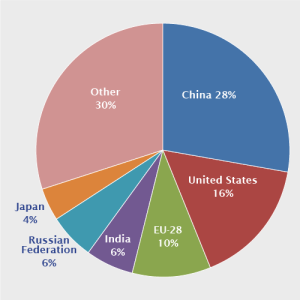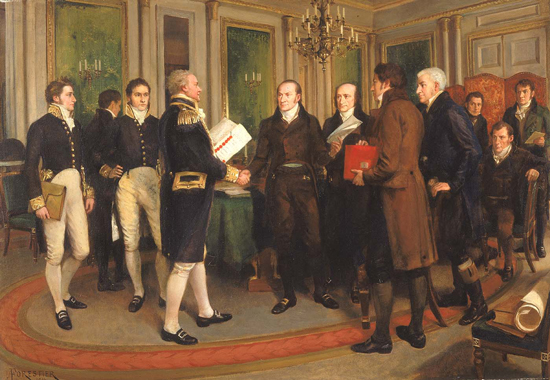Since well before the adoption in December of the Paris Climate Accord, the State Department was angling for a splashy junket in New York for the opening to signature. This will be on Earth Day, April 22.
Tradecraft note: an international agreement is adopted by a group of states at a diplomatic conference: that means they agree on the text, and won’t try to renegotiate it. Adoption does not commit any of them legally to the binding acts of signature [update] with ratification or acceptance – compare engagement and marriage. The adopted text will lay down the date of opening to signature, usually later to allow for translations and legal proofreading. States then sign it, which is signifies [update] the commitment by their government to comply, possibly with a caveat as to ratification, which may involve parliamentary approval depending on the national legal system. For the US, it’s an executive agreement, so Obama can sign [update] and accept without reservation as to ratification. [Slight correction: the Paris Accord actually requires deposit of “instruments of ratification, acceptance, approval or accession” as well as signatures, see Articles 20(1) and 21(1), and Articles 11 and 14 of the 1969 Vienna Convention on the Law of Treaties. The signature by itself is ceremonial and no longer does anything beyond estopping the Party from acting to frustrate the treaty, ibid. Article 18.]
France is still in the chair of the Conference of the Parties. How are they getting on with the show? March 11 report:
Ségolène Royal, French Environment Minister and newly-appointed President of the UN-led climate negotiations, said yesterday that more than 30 heads of state and government have already said they will attend the signing event.
She is hoping and working to get this up to 80-100, and I’m sure John Kerry is adding his weight. It won’t match the record 150 of the opening of the Paris conference, and does not need to for what is basically a photo-op with Barack Obama as he rides gracefully into the sunset.

Shares of GHG emissions, 2011. Source EPA
The practical interest is whether the UN can reach the target for entry into force on Day 1. This requires signatures by 55 countries responsible for 55% of global emissions. Heads of state and government won’t be going unless they can sign, so the 30 is a fix. But signing can perfectly well be done by a minister with a less crowded diary, or the regular ambassador to the UN. The emissions bar will be just about met if only the US (16%), China (28%), and the EU-28 (10%), making 54%, sign together. It all looks very doable.
Watch out if any countries uprate their NDCs. So far they are INDCs, “intended national determined contributions”. The final ones will be attached to the signatures. I’ve been pointing out for a while that China and India are outpacing their INDCs on the ground and could improve their offers to general acclaim at no policy cost. Whether they do so on April 22 is a question of PR.
As is the whole thing. Don’t complain: successful diplomacy has always been a theatre of reconciliation. A successful launch of the Paris Accord will get its machinery up and running, and increase its chances of impact. A pity the wax seal bling has gone.
Has Bill McKibben got his big street demo organised? Obama has written his speech.
[Update 4 April early:] Report here that the USA, China and India will all sign on April 22. The 55% of emissions will be met with partial EU signatures, and many other countries will speed up not to be left out. However, their instruments of ratification or acceptance will still be in the post. Actual entry into force is likely in the summer or early autumn - before the US election. That’s unusually swift for a large multilateral treaty.

Leave a Reply
You must be logged in to post a comment.